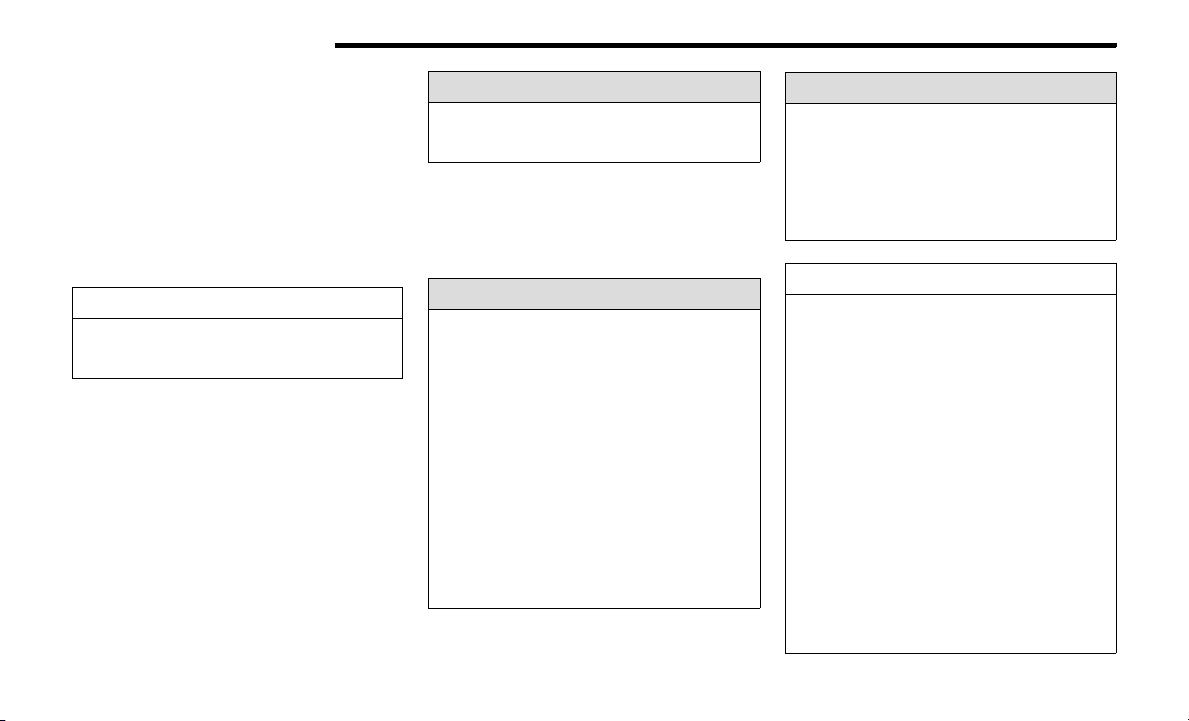Loading ...
Loading ...
Loading ...

250 SERVICING AND MAINTENANCE
(Continued)
CHECKING OIL LEVEL
To ensure proper lubrication of your vehicle's engine, the
engine oil must be maintained at the correct level. The
engine oil level should be checked five minutes after a
warmed up engine has been shut off.
Checking the oil while the vehicle is on level ground will
improve the accuracy of the oil level readings. Always
maintain the oil level within the SAFE zone on the dipstick.
Adding 1 quart (0.95 liters) of oil when the reading is at the
bottom of the crosshatch zone will result in a reading at
the top of the crosshatch zone on these engines.
ADDING WASHER FLUID
The fluid reservoir is located in the engine compartment.
Be sure to check the fluid level at regular intervals. Fill the
reservoir with windshield washer solvent only (not radiator
antifreeze). When refilling the washer fluid reservoir, take
some washer fluid and apply it to a cloth or towel and wipe
clean the wiper blades; this will help blade performance.
To prevent freeze-up of your windshield washer system in
cold weather, select a solution or mixture that meets or
exceeds the temperature range of your climate. This rating
information can be found on most washer fluid containers.
MAINTENANCE-FREE BATTERY
Your vehicle is equipped with a maintenance-free battery.
You will never have to add water, nor is periodic
maintenance required.
CAUTION!
Overfilling or underfilling the crankcase will cause
aeration or loss of oil pressure. This could damage your
engine.
WARNING!
Commercial windshield washer solvents are flammable.
They could ignite and burn you. Care must be exercised
when filling or working around the washer solution.
WARNING!
Battery fluid is a corrosive acid solution and can burn
or even blind you. Do not allow battery fluid to
contact your eyes, skin, or clothing. Do not lean over
a battery when attaching clamps. If acid splashes in
eyes or on skin, flush the area immediately with large
amounts of water. Refer to “Jump Starting Proce-
dure” in “In Case Of Emergency” for further informa-
tion.
Battery gas is flammable and explosive. Keep flame
or sparks away from the battery. Do not use a
booster battery or any other booster source with an
output greater than 12 Volts. Do not allow cable
clamps to touch each other.
Battery posts, terminals, and related accessories
contain lead and lead compounds. Wash hands after
handling.
Vehicles with the Stop/Start system will be equipped
with two batteries. Bot the main and the supple-
mental batteries must be disconnected to
completely de-energize the 12 Volt electrical system.
Serious injury or death could result if you do not
disconnect both batteries. To learn how to properly
disconnect, see an authorized dealer.
CAUTION!
It is essential when replacing the cables on the
battery that the positive cable is attached to the posi-
tive post and the negative cable is attached to the
negative post. Battery posts are marked positive (+)
and negative (-) and are identified on the battery
case. Cable clamps should be tight on the terminal
posts and free of corrosion.
If a “fast charger” is used while the battery is in the
vehicle, disconnect both vehicle battery cables
before connecting the charger to the battery. Do not
use a “fast charger” to provide starting voltage.
Vehicles with the Stop/Start system will be equipped
with two batteries. Both the main and the supple-
mental batteries must be disconnected to
completely de-energize the 12 Volt electrical system.
If the negative battery cables are not isolated prop-
erly it can cause a potential power spike or surge in
the system, resulting in damage to essential elec-
trical components.
WARNING!
20_JT_OM_EN_USC_t.book Page 250
Loading ...
Loading ...
Loading ...